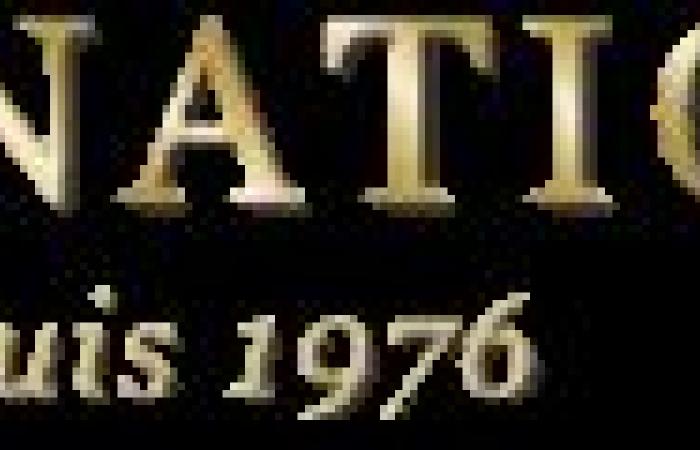In this monthly letter, you will find an update on the performance of gold as well as several news and analyzes on subjects that influence the price of the yellow metal.
What to remember from the past month
- Performance in October: +6.88%, driven by the US election
- Prospects for geopolitical tensions keep gold attractive
- BRICS want to create a precious metals exchange
- Poland, leading buyer country in 2024
+6.88% in October
The price of gold in euros increased by 6.88% in October, reaching a level of 2,517 euros per ounce at the end of the month. The yellow metal even reached an all-time high on October 29 at the second London fixing at 2564.51 euros per ounce. The performance in euros over 2024 stood at +34.5% at the end of October, while the CAC 40 has fallen by 2.45% since the start of the year.
In October, the price was driven by the drop in American rates, the uncertain international context, particularly in the Middle East and Ukraine, as well as the American elections. On this point, gold benefited from its status as a safe haven against the fear of a close and indecisive election, with possible recounts and legal appeals, or even domestic incidents.
Correction in November following Trump's election
Between the end of October and the close of November 11, the price of the yellow metal fell by 2%, which brings the 2024 performance to +31.7%. The stock market, although it has rebounded, remains in negative territory: the Parisian index has still lost 1.4% since the start of the year.
After the sharp rise in October, the post-election climate therefore provided a window for taking profits.
The American election was indeed surprising with the clear victory of the Republican candidate, a clearness which quickly removed the uncertainties surrounding the election. Markets surged, particularly in the United States, as investors expected pro-business policies (less regulation and taxes) favorable to stock prices. Gold, traditionally negatively correlated with risky markets, losing some of its interest as a safe haven, has logically corrected.
Another factor which weighed on the price of the yellow metal: the rise in interest rates on the market, due to a probably inflationary impact of Trump's policies, under the double effect of stimulation of the economy and customs duties which will make imports more expensive. Finally, the dollar appreciated significantly, which, for European investors, cushioned the correction of the yellow metal traditionally quoted in dollars.
Prospects for geopolitical tensions maintain the appeal of gold
Trump's second term will surprise less than the first: we know the character, his unpredictability, and his protectionist inclination. What is less known is how China, Russia, Ukraine and Iran will react to Trump's statements and decisions. These countries too have learned from the first mandate and could be bolder in their reactions.
Even if the gold price correction may continue, the characteristics of the yellow metal will continue to be appreciated by investors. In its post-election investment strategy note, Swiss private bank Lombard Odier maintains its overweighting in gold “as a portfolio hedging instrument”. It advocates avoiding geopolitical risks and favoring the liquid assets of developed countries. Same positioning for the private bank Pictet which cites increased uncertainties and potential geopolitical tensions.
BRICS want to create a precious metals exchange
The BRICS summit took place at the end of October in Kazan, Russia. In the final communiqué, in point 91, the member countries declare “support efforts to increase trade in precious metals between BRICS based on common quality standards”.
According to Reuters, discussions are underway between the member countries of the BRICS group to create a precious metals exchange. Russian Finance Minister Anton Siluanov recently stated that “The mechanism will include the creation of price indicators for metals, standards for gold production and trading, and instruments for accreditation of gold participants.” market, for settlement, delivery and audit within the BRICS”.
It should be remembered that China and Russia are the two largest global producers of the yellow metal (with 378 and 321 tonnes respectively extracted in 2023 according to the World Gold Council) and that Russian gold is subject to sanctions. The creation of market infrastructures (stock exchanges, settlement systems, definition of standards) would thus compete with the London Bullion Market Association (LBMA) which remains the international, but Western, standard.
Poland buys 22 tonnes of gold in September
Poland stands out as the most active country in terms of increasing its gold reserves. In early October, the country's central bank governor Adam Glapinski announced that the country now held 420 tonnes of gold, up from 22 tonnes in September. This brings purchases in 2024 to 61 tonnes of the yellow metal, placing the country at the top of the official 2024 list.
The governor announced that he wanted to continue this momentum in order to hold 20% of his reserves in the yellow metal. And added: “when this objective is achieved, we will join the ranks of the best economies in the world”.
Beyond the economic objective, there is no doubt that Warsaw attaches strategic importance to these reserves which would stabilize the economy in difficult times, since the country would probably be on the front line of a confrontation with Russia.
Warning :
The price of gold can vary significantly up or down. The information contained in this document does not constitute an investment recommendation and the reader is invited to seek advice from professionals for the management of their savings.

Back








